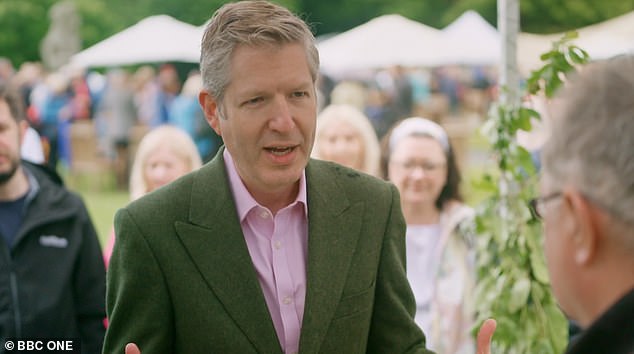<!–
<!–
<!– <!–
<!–
<!–
<!–
An Antiques Roadshow expert was amazed by a set of engravings dating back more than 550 years, which could be “the oldest printed object we have ever seen”.
Book and manuscript expert Matthew Haley was presented with a set of script sheets from the dawn of printing during the BBC programme’s visit to Glasgow.
Presenter Fiona Bruce explained that old and rare books are “an exciting find”, especially those by the printing pioneers who brought the Bible to the masses in Western Europe in the 15th century.
“It’s really special,” said Mr. Haley, adorned with pages from such books, “speaking of antique prints: these are just about the oldest printed objects we’ll ever see on the Antiques Roadshow.”
The visitor who brought the sheets to Pollok Park explained that his wife bought them for him as a “special gift” after his interest in printing and typefaces began as a member of the printing industry.
An Antiques Roadshow expert was amazed by a set of engravings dating back more than 550 years, which could be “the oldest printed object we have ever seen”.
The collection of manuscripts dates back to the 1470s, and one of them was printed by the person who first printed in England.
The visitor who brought the documents to Glasgow’s Pollok Park explained that his wife bought them for him as a “special gift”.
At the top of the collection was a sheet printed by William Caxton, the first person to print in England, in 1482.
Mr Haley estimated that single sheet cost between £600 and £1,000.
Even older were manuscripts from Germany and Italy dating back to 1470 (552 years ago), including those by Peter Schoeffer, Johannes Gutenberg’s “apprentice.”
Explaining the meaning of that name, the expert said: ‘Gutenberg printed the Gutenberg Bible in 1455. That was an absolutely fundamental change basically in the history of the human race.
‘Without the printing press, we would not have had the Reformation. It’s like the explosion that happened when the Internet came onto the scene. This happened in the 1450s, 1460s and 1470s.
“For someone interested in books like me, this is pure gold, it’s really phenomenal.”
The most striking sheet on display featured a colorful image, and the couple explained that the color must have been added later, as printing had not evolved enough to produce such an image at the time.
Concluding, Mr Haley estimated that the collection could cost between £5,000 and £10,000, to which the owner joked: “Don’t tell the wife.”
Haley estimated the “special” collection could cost between £5,000 and £10,000, to which the owner joked: “Don’t tell the wife.”

